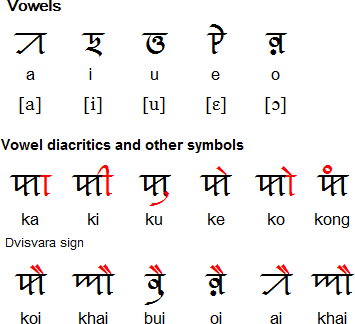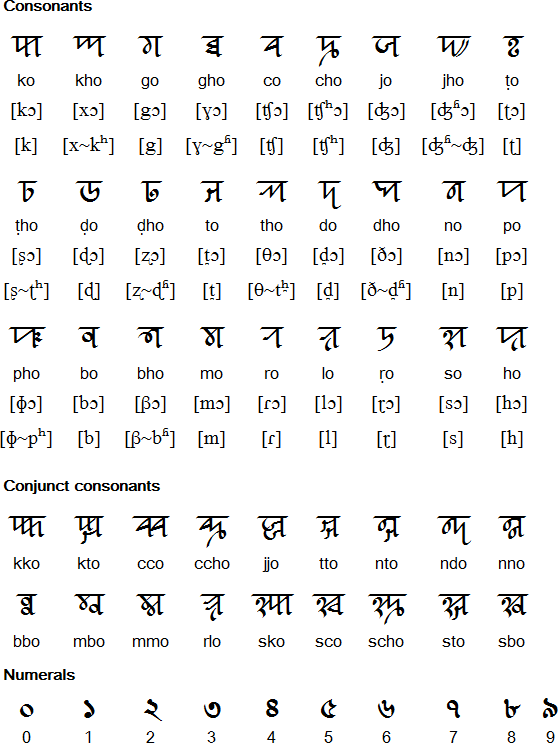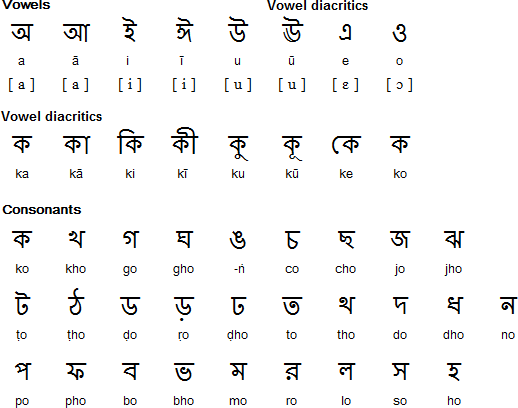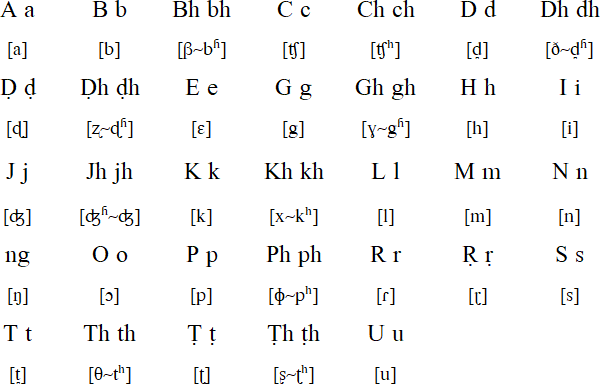Syloti-Nagri alphabet

The Syloti-Nagri alphabet is related to the Kaithi alphabet of Bihar.
The exact origins of the alphabet are unknown and the earliest surviving
manuscripts dates from either 1549 or 1774 (the date is given within
the manuscript though the text is not clear at that point).
The traditionally story of the origin of the Syloti-Nagri alphabet
is that it was developed around the beginning of the 14th century by
Saint Shahjalal and his 360 saintly companions, most of whom were Arabic
speakers. Other scripts used at the time were deemed unsuitable for
the Sylheti language.
In the late 17th century, Persian became the official language of the
Delhi Sultanate and the Perso-Arabic script was used in all official
documents. The Sylheti language and alphabet continued to be used by
the ordinary people for everyday matters.
In the 1860s, a Sylheti by the name of Moulvi Abdul Karim spent several
years in Europe and learnt the printing trade. After returning home,
he designed a woodblock type for the Syloti-Nagri alphabet and founded
the Islamia Press in Sylhet Town in about 1870. Other Sylheti presses
were established in Sunamgonj, Shillong and Calcutta. These presses
fell out of use during the early 1970s. Since then the Syloti-Nagri
alphabet has been used mainly by linguists and academics.
Notable features
- The alphabet is written in horizontal lines from left to right,
but Sylheti books are paginated from right to left. This means that
the front cover of a Sylhettan book is where the back cover of an
English book would be. - This is a syllabic alphabet in which consonants all have an inherent
vowel. Other vowels are indicated with diacritics or separate letters.
The inherent vowel can be muted with a special diacritic called a
hasanta. - Vowels can be written as independent letters, or by using a variety
of diacritical marks which are written above, below, before or after
the consonant they belong to. - When consonants occur together in clusters, special conjunct letters
are used. The letters for the consonants other than the final one
in the group are reduced. The inherent vowel only applies to the final
consonant.
Used to write:
Sylheti, an eastern Indo-Aryan language spoken by around 10 million
in the Sylhet region of Bangladesh and in parts of India. Sylheti is
closely related to Bengali (Bangla) and most speakers are bilingual
in Sylheti and Bengali.

Note
- The dvisvara sign can attach to consonants to form the diphthong /oi/
with the inherent vowel, or it can also combine with dependent or independent
vowels to form other diphthongs. Those diphthongs can also be written with
the independent vowel i.

Bengali alphabet for Sylheti

Latin alphabet for Sylheti

Information about the Sylheti scripts and pronunciation compiled or corrected by Wolfram Siegel
Links
Information about Syloti-Nagri alphabet
http://en.wikipedia.org/wiki/Sylheti_Nagari
Syloti-Nagri fonts
http://www.sylheti.org.uk/page5.html
http://www.wazu.jp/gallery/Fonts_SylotiNagri.html
Sylheti Translation and Research – a London-based research organisation
dedicated to studying the folk literature of the Sylhet region of Bangladesh:
http://www.sylheti.org.uk
Sylhet Nagri Texts Documentation Archive
http://www.compcon-asso.in/projects/sylhet/
http://www.compcon-asso.in/projects/sylhet/manuscripts/
